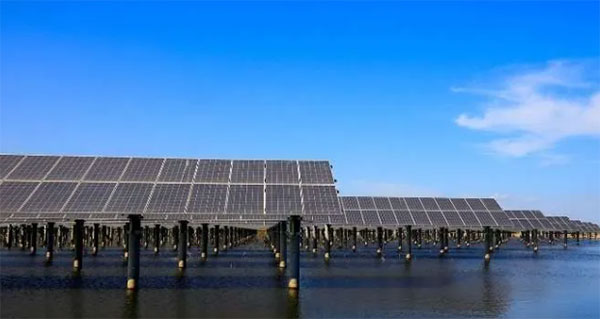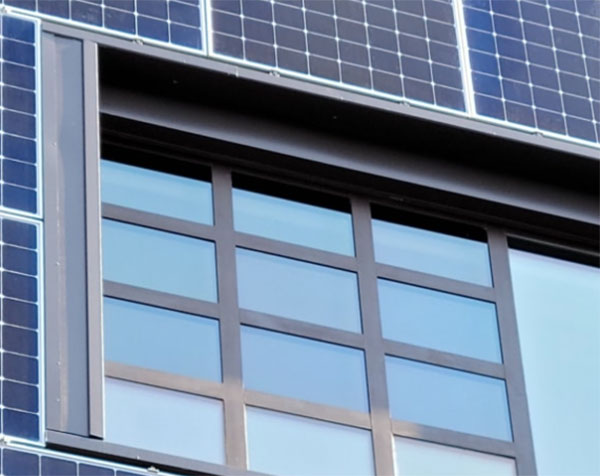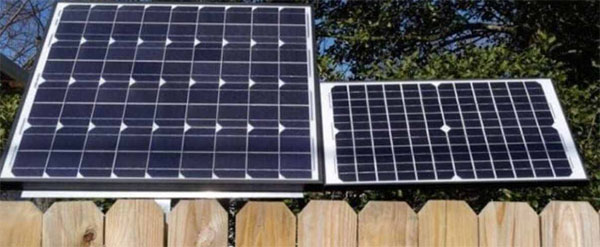Description
Installing solar panels in Florida costs between $10,000 to $25,000 after incentives, depending on system size and efficiency.
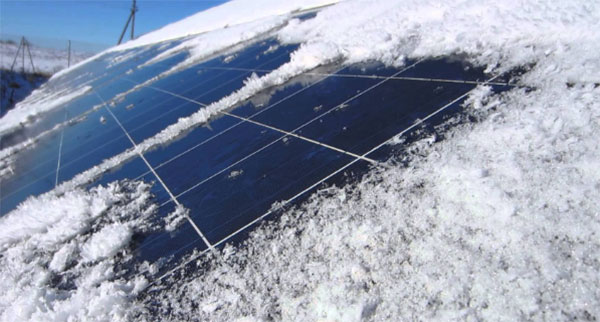
Effectiveness of Solar Panels in Cold Climates
Solar panels in cold climates face unique challenges but also benefit from certain advantages. The common misconception that solar panels only work in warm, sunny environments is far from the truth. In reality, solar panels can be more efficient in colder temperatures.
Overview of Solar Panel Operation in Winter
Solar panels generate electricity by converting sunlight into energy. The efficiency of this process can actually increase in colder temperatures. A solar panel's output is determined by its semiconductor materials, which can perform better at lower temperatures due to reduced resistance.
However, the key factor affecting solar energy production in winter is not the cold itself but the reduced daylight hours and potential snow and ice coverage.
Impact of Snow and Ice on Solar Energy Production
Snow and ice can obstruct the sunlight from reaching the solar cells, significantly reducing the panels' energy production. A layer of snow can completely block light, while ice formations can cause scattering of light, leading to efficiency losses.
Studies have shown that solar panels covered with snow can see their output reduced by up to 100%, effectively halting energy production. Yet, the angle and smooth surface of most solar panel installations help shed snow relatively quickly, and the warmth generated by the panels themselves can aid in melting light snow and ice.
Strategies for Enhancing Winter Performance
- Automatic Snow Removal Systems: Some advanced installations include automated systems that can detect snow accumulation and activate heating elements to melt the snow or mechanical devices to clear the panels.
- Panel Tilt and Orientation: Optimizing the tilt angle of solar panels for winter conditions can significantly reduce the accumulation of snow and ice. A steeper angle helps snow slide off more easily.
Economic Considerations
The initial cost of solar panel installation can be high, with average prices ranging from $15,000 to $25,000 for a residential setup after tax credits. However, the efficiency gains in cold weather, due to lower resistance in solar cells, can offset some winter losses caused by snow and ice. Moreover, the longevity of solar panels, often exceeding 25 years, ensures that the investment can be recovered over time through reduced utility bills.
Innovations in Cold Weather Solar Technology
Recent advancements in materials science have led to the development of solar panels that are specifically designed to perform better in cold climates. These include panels with anti-reflective coatings that improve light absorption and heating elements to prevent ice formation.
Such technologies represent a significant step forward in maximizing solar energy production year-round.

Mechanisms of Ice Accumulation on Solar Panels
Understanding the
mechanisms of ice accumulation on solar panels is crucial for maintaining their efficiency during the colder months. Ice formation can significantly impact the energy output and longevity of solar panels. This section delves into the factors leading to ice accumulation and compares the effects of ice on different types of solar panels.
Factors Leading to Ice Formation
- Temperature and Humidity: Ice accumulation on solar panels primarily occurs when the temperature falls below 0 C, especially when there is high humidity in the air, leading to frost and ice formation.
- Lack of Sunlight: Reduced sunlight during winter months contributes to lower panel temperatures, increasing the likelihood of ice formation.
- Wind Exposure: Panels exposed to cold winds are more prone to ice buildup due to the cooling effect of the wind, which lowers the surface temperature of the panels.
Key Points:
- Ice forms more readily on panels installed at shallow angles, as they allow water to pool and freeze.
- The efficiency of solar panels can drop by up to 25% when covered with ice, affecting the overall power output.
Comparison of Ice Effects on Different Types of Solar Panels
- Monocrystalline Solar Panels: Known for their high efficiency, monocrystalline panels are also relatively more resistant to ice damage due to their sturdy design. However, ice can still reduce their efficiency by blocking sunlight.
- Polycrystalline Solar Panels: These panels might be less efficient than monocrystalline panels in ideal conditions, but they share similar susceptibilities to ice accumulation. The impact of ice on polycrystalline panels can vary but generally leads to a 20% to 25% reduction in output.
- Thin-Film Solar Panels: Due to their flexible installation options, thin-film panels can be more susceptible to ice damage if not installed with adequate slope. Their efficiency might decrease by up to 30% when covered with ice.
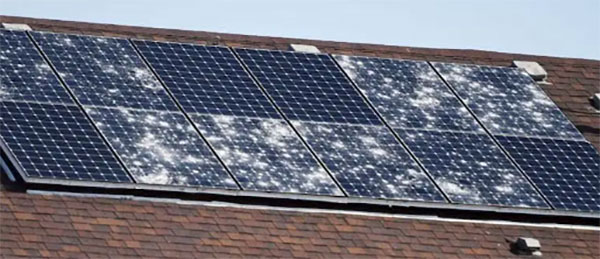
Strategies for Maintaining Solar Panel Efficiency in Winter
Maintaining the efficiency of solar panels during the winter months is crucial for ensuring consistent energy production. Various techniques and preventive measures can be employed to minimize the impact of snow and ice accumulation on solar panels.
Techniques for Ice and Snow Removal
- Manual Removal: Use a soft brush or squeegee attached to an extension pole to gently remove snow and ice. Avoid using metal tools as they can scratch the surface of the panels.
- Automated Systems: Install automated cleaning systems that can be programmed to remove snow and ice at set intervals, ensuring minimal disruption to energy production.
- Heating Elements: Some solar panels come equipped with heating elements that can be activated to melt snow and ice, similar to rear window defrosters in cars.
- Tilted Installation: Mount panels at a steeper angle (greater than 35 degrees) to allow snow and ice to slide off more easily due to gravity.
- Advantages: Reduces manual cleaning requirements and utilizes natural processes for snow removal.
- Costs: Initial installation may be more expensive due to the need for specialized mounting hardware.
Preventive Measures to Reduce Ice Accumulation
- Surface Coatings: Apply hydrophobic coatings to the surface of the panels to prevent water and ice from adhering. These coatings can significantly reduce the likelihood of ice accumulation.
- Material Quality: High-quality coatings ensure longevity and effectiveness, typically lasting for several years before reapplication is needed.
- Regular Inspections: Conduct pre-winter inspections to identify and repair any damages that could exacerbate ice accumulation, such as cracks or gaps in the panel frames.
- Efficiency Impact: Preventing damage before winter can help maintain optimal energy production levels throughout the season.
- Vegetation Management: Trim trees and other vegetation around the installation site to reduce shading and minimize the risk of snow accumulation on the panels.
Key Points to Consider:
- Budget and Cost: Evaluate the cost-effectiveness of different snow and ice removal techniques and preventive measures. Automated systems and heating elements may have higher upfront costs but can offer savings in the long term by maintaining efficiency.
- Panel Specifications: Choose solar panels designed for cold climates, which may include features such as integrated heating elements or materials that naturally resist ice formation.
- Energy Production Goals: Consider the impact of winter conditions on your overall energy production goals. In regions with heavy snowfall, more aggressive snow and ice management strategies may be necessary.
Case Studies: Solar Panels Performance Under Ice Conditions
Exploring the performance of solar panels in icy conditions reveals valuable insights into the resilience and adaptability of solar technology in harsh climates. This section delves into specific case studies from regions known for heavy snowfall and the strategies implemented to harness solar energy efficiently despite challenging weather conditions.
Analysis of Solar Panels in Regions Prone to Heavy Snowfall
Case Study 1: Northern Europe
- Location: Sweden, known for its long, dark winters and heavy snow.
- Solar Panel Efficiency: Despite reduced daylight hours, solar installations have achieved efficiency rates of up to 80% of their optimal performance.
- Techniques Used: Implementation of automated snow removal systems and use of solar panels designed to absorb diffused sunlight.
- Cost Implications: Initial setup costs increased by 15% due to specialized equipment, but energy savings offset these costs within five years.
Case Study 2: Rocky Mountains, USA
- Location: Colorado, where snow can accumulate quickly and remain for months.
- Impact on Energy Production: A study found a 10-20% reduction in yearly energy output due to snow cover.
- Adaptive Strategies: Panels were installed at an optimal tilt of 40 degrees, significantly reducing snow accumulation.
- Cost vs. Benefit: The increased efficiency from the tilt adjustment led to a 5% improvement in annual energy production, justifying the minimal additional installation costs.
Success Stories of Solar Energy Utilization in Cold Weather
?Solar-Powered Ski Resort
- Location: Vermont, USA, an area known for heavy winter snowfall.
- Project Outcome: The resort operates entirely on renewable energy, with solar panels contributing 60% of its power needs.
- Innovations Applied: Use of bifacial solar panels that collect reflected sunlight from the snow, increasing energy production by up to 10% during winter months.
- Economic Impact: The resort has seen a 30% reduction in energy costs and expects ROI within 8 years.
?Community Solar Project in Alaska
- Location: Fairbanks, Alaska, one of the coldest regions in the US.
- System Performance: Despite extreme temperatures, the community solar project exceeds expected power generation by 5% annually.
- Key Factors: Strategic panel placement and community involvement in maintaining panel efficiency through volunteer snow removal efforts.
- Community Benefits: Reduced energy costs for participants and enhanced local energy resilience.
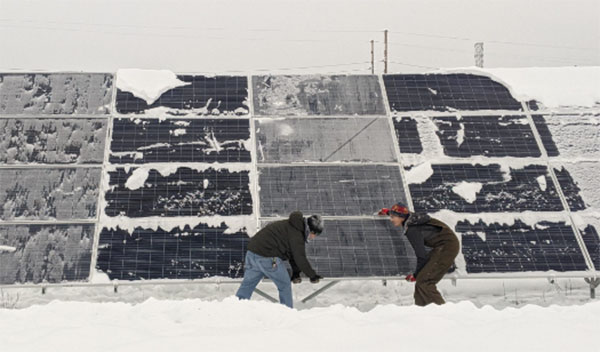
Innovations and Technologies for Ice-Resistant Solar Panels
The development of ice-resistant solar panels is a burgeoning field of innovation, with new materials and technologies emerging to enhance the performance of solar panels in cold climates. These advancements aim to minimize ice accumulation, thus maintaining high efficiency levels throughout the winter months.
Coatings and Materials for Enhancing Ice Resistance
Hydrophobic Coatings
- Functionality: These coatings repel water, preventing ice formation on the solar panel surface.
- Efficiency Improvement: Solar panels treated with hydrophobic coatings can maintain up to 98% of their efficiency in icy conditions.
- Cost: The application of hydrophobic coatings can increase the initial cost of solar panels by 5-10%, but this is offset by the long-term savings in maintenance and energy production.
Anti-icing Materials
- Innovative Materials: Incorporating materials like graphene within the solar panel surface has shown promise in reducing ice adherence.
- Advantages: Besides enhancing ice resistance, these materials can improve the durability and lifespan of solar panels.
- Cost Implications: While such materials can raise the production cost by approximately 15%, they extend the panel's operational life, thereby providing cost savings over time.
Future Trends in Solar Panel Design for Cold Climates
Integrated Heating Elements
- Design: Future solar panels may include built-in heating elements that can be activated to melt away snow and ice without significantly impacting energy efficiency.
- Power Consumption: These elements are designed to use minimal electricity, ensuring that the net energy output of the solar panel remains high.
- Projected Costs: Initial models suggest a 20% increase in panel costs but promise a 25-30% improvement in winter efficiency.
Self-Cleaning Surfaces
- Technology: The development of self-cleaning surfaces mimics the lotus leaf's natural water-repellent properties, enabling panels to shed snow and ice effortlessly.
- Performance Enhancement: This technology could potentially increase winter energy production by up to 15%.
- Economic Impact: Though adding a premium to the panel cost, the reduction in maintenance and consistent energy output justifies the investment.
Bifacial Solar Panels
- Dual-Sided Design: Capturing sunlight from both sides, bifacial panels can absorb reflected light from the snow, compensating for reduced direct sunlight in winter.
- Efficiency Gain: This design can lead to a 10-20% increase in energy production during snowy periods.
- Price Consideration: Bifacial panels cost approximately 10% more than traditional panels but offer significant gains in power generation, especially in snowy environments.
Key Takeaways:
- Investment in Innovation: The ongoing research and development in ice-resistant technologies represent a crucial investment in the future of solar energy in cold climates.
- Balancing Cost and Efficiency: While some innovations may increase upfront costs, the long-term benefits in efficiency, durability, and reduced maintenance are substantial.
- Adaptation to Climate Challenges: These technologies showcase the solar industry's adaptability, ensuring that solar power remains a viable energy source even in the harshest climates.





